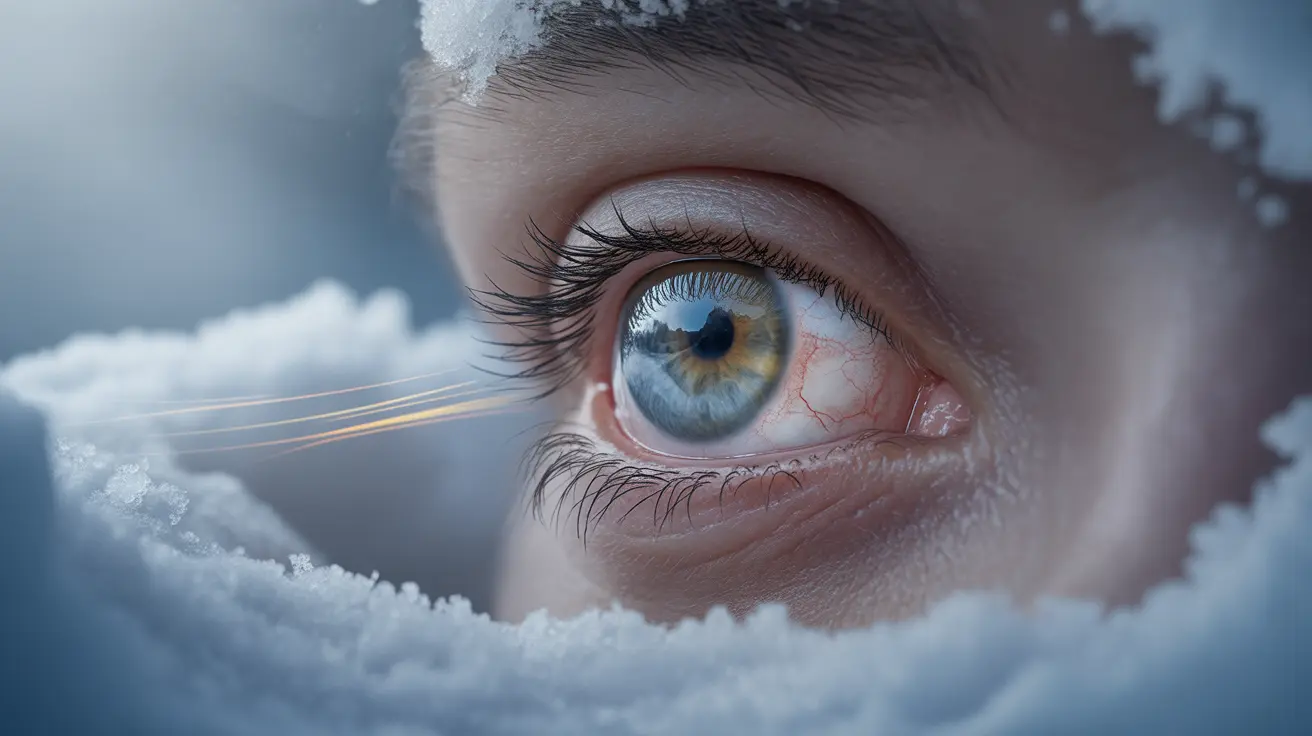Snow blindness, also known as photokeratitis, is a temporary but painful condition that occurs when your eyes are overexposed to ultraviolet (UV) rays. Understanding how long snow blindness lasts and recognizing its symptoms is crucial for proper treatment and prevention. This comprehensive guide will help you navigate this uncomfortable condition and know when to seek medical attention.
Understanding Snow Blindness and Its Timeline
Snow blindness typically develops several hours after UV exposure, and while uncomfortable, it's usually temporary. Most cases resolve within 24-48 hours with proper care and protection from further UV exposure. However, the severity and duration can vary depending on the extent of exposure and individual factors.
Common Symptoms and Their Onset
The symptoms of snow blindness typically appear 6-12 hours after UV exposure, making it important to recognize the warning signs early. Common indicators include:
- Severe eye pain or burning sensation
- Feeling like there's sand or grit in your eyes
- Increased sensitivity to light
- Excessive tearing
- Blurred vision
- Swollen eyelids
- Headache
Treatment Options for Snow Blindness
Immediate First Aid
If you suspect snow blindness, taking prompt action can help reduce discomfort and support healing:
- Remove contact lenses if wearing them
- Stay in a dark room or wear dark sunglasses
- Use artificial tears to keep eyes moisturized
- Apply cool compresses to closed eyes
- Avoid rubbing your eyes
Medical Treatment
While most cases can be managed at home, certain situations require professional medical attention, particularly if symptoms are severe or persist beyond 48 hours. A healthcare provider may prescribe:
- Antibiotic eye drops to prevent infection
- Pain-relieving medications
- Specialized eye drops for comfort
Risk Factors and Prevention
Certain individuals and situations pose higher risks for developing snow blindness:
- Winter sports enthusiasts (skiers, snowboarders)
- Mountain climbers
- Beach-goers
- People at high altitudes
- Those working outdoors in snowy conditions
Prevention Strategies
Taking preventive measures is crucial to avoid snow blindness:
- Wear high-quality UV-blocking sunglasses
- Use goggles that wrap around the face
- Choose eyewear with side shields
- Apply UV-blocking contact lenses when appropriate
- Limit exposure during peak UV hours (10 am to 4 pm)
Frequently Asked Questions
1. How long does snow blindness usually last and when should I see a doctor?
Snow blindness typically lasts 24-48 hours with proper care. Seek immediate medical attention if symptoms persist beyond 48 hours, you experience severe pain, or your vision becomes significantly impaired.
2. What are the common symptoms of snow blindness and how soon do they appear after UV exposure?
Symptoms usually appear 6-12 hours after exposure and include severe eye pain, sensation of grit in the eyes, light sensitivity, tearing, blurred vision, and swollen eyelids.
3. How can I treat snow blindness at home and relieve the eye pain?
Stay in a dark room, apply cool compresses, use artificial tears, avoid eye rubbing, and take over-the-counter pain relievers. Remove contact lenses if wearing them.
4. What causes snow blindness and who is most at risk of developing it?
Snow blindness is caused by UV radiation damaging the cornea. Those most at risk include winter sports enthusiasts, mountain climbers, and people spending extended time outdoors in snowy or highly reflective environments.
5. How can I prevent snow blindness during outdoor winter activities?
Wear proper UV-blocking eyewear, including wraparound sunglasses or goggles with side shields. Limit exposure during peak UV hours and ensure your eye protection meets UV400 standards.




